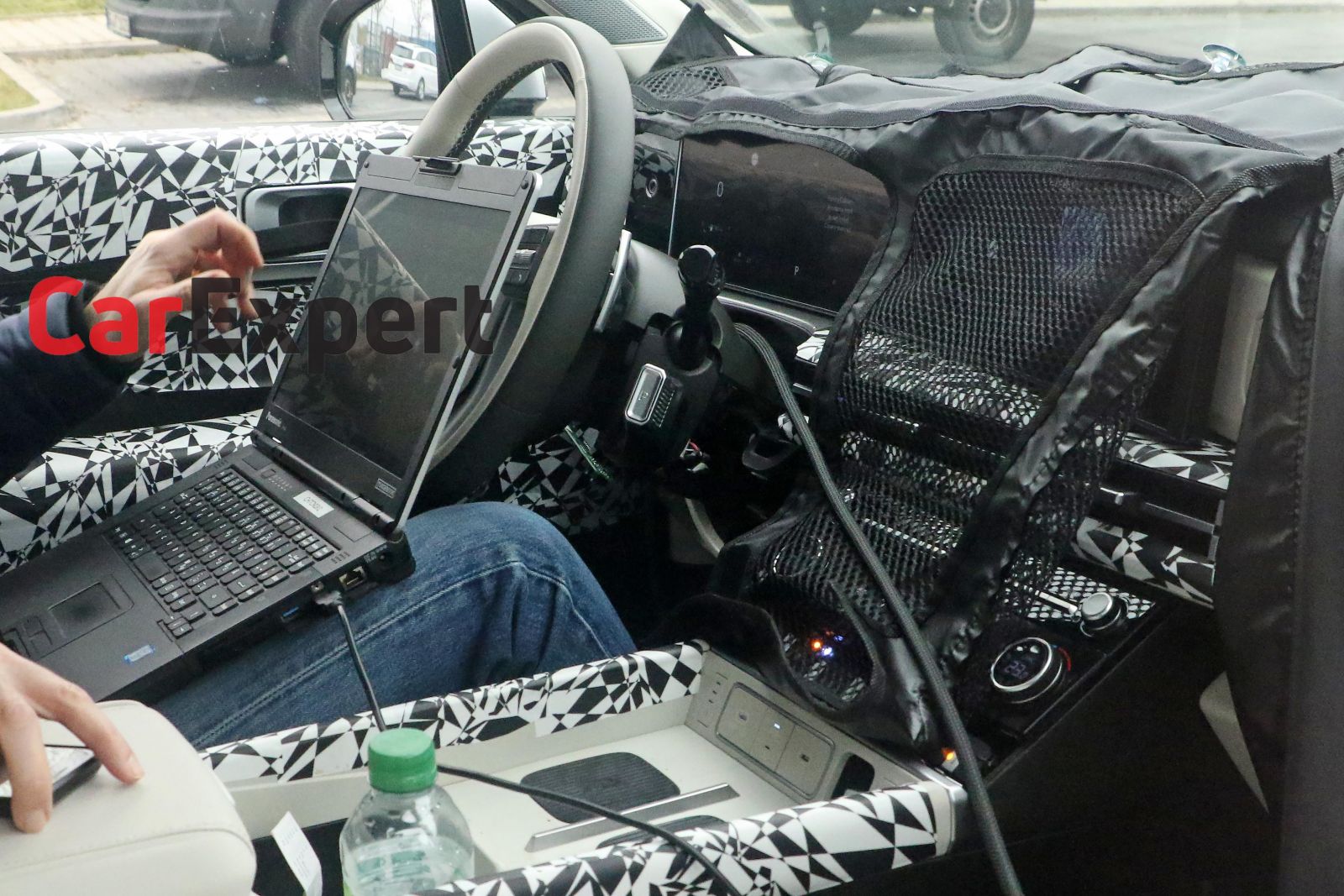The upcoming next-generation Hyundai Santa Fe seven-seat SUV has been spied for the first time without any heavy camouflage ahead of its reveal later this year.
It’s expected to arrive in Australia during 2024.
These latest spy photographs, published by Korean website Autospy, show the Santa Fe on the back of a car carrier truck with minimal black-and-white camouflage that better reveals its Land Rover Defender-like silhouette.
The D-pillar of this spied prototype appears to sit almost upright, unlike the slanted pillar of the larger Palisade, giving the Santa Fe an even bluffer look than the flagship SUV.
It’s expected the tailgate will be particularly upright as well, though the rear can’t be seen in this particular set of spy images.
A previously spied Santa Fe prototype have shown there will be a new LED light signature with a prominent ‘H’ motif we haven’t seen from Hyundai before. It’s a drastic departure from the current model and its twin-headlight design.
Another spied prototype revealed the next-generation Santa Fe will have an interior that follows the same design language as the Ioniq 6, as well as the recently revealed Sonata and Kona updates.
It’s unclear if the changes beneath the skin of the new Santa Fe will be quite as dramatic as its new look.
The Santa Fe moved to a new platform shared with the Kia Sorento in 2021, giving it access to hybrid and plug-in hybrid (PHEV) powertrains. Only the hybrid has ended up coming to Australia.
Both electrified Santa Fe models uses a turbocharged 1.6-litre four-cylinder engine paired with an electric motor, lithium-ion battery and a six-speed automatic transmission. These powertrains are shared with the Kia Sorento hybrid and PHEV.
The non-electrified Santa Fe range is currently available in Australia with a choice of 2.2-litre turbo-diesel four-cylinder and 3.5-litre naturally aspirated petrol V6 engines. The latter has been largely phased out outside our market.
Markets like Korea and North America get a turbocharged 2.5-litre four-cylinder petrol engine in lieu of the V6, while a naturally aspirated version is also offered in some markets.
Hyundai played it extremely safe with the current Santa Fe’s styling, which despite the new platform looks almost identical to the previous generation.
Likewise, the first four generations – although more distinguished from each other – represented a clear design evolution.
But with the Santa Fe losing ground in Australia and Korea to its pricer Palisade stablemate and its Kia Sorento corporate cousin, Hyundai’s designers appear to have been given the go-ahead to pen a more radical design.




